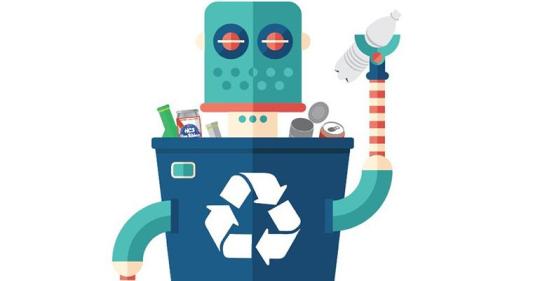Don't wanna be here? Send us removal request.
Text
Project idea: Recycling Robot
Problem: Recycling is the process of collecting and processing materials that would be reused and turned into new products. There is no doubt that recycling can benefit the community and the environment. Researches showed that more than sixty percent of the household waste could be recycled. However, the bad news is that, if recycling is poorly mixed or mishandled, it just gets dumped and not recycled at all, which would lead to greater costs and impose bad influence on the environment. It was reported that only around 60 percent of recycling is actually recycled and the rest goes into trash due to people’s lack of knowledge of various local recycling rules.
I was born and raised in China, in which public conscience and the level education of recycling was much lower than other developed countries. When I first came to the USA, I always have trouble sorting the waste and was fined for mixing garbage and incorrect recycling several times. After I studied the handout given by my apartment manager, I noticed that many people are recycling incorrectly, even they think they know how to do it. Therefore, I aim to build a robot to avoid recycling mistakes and support a smart and sustainable waste sorting features.
Robot-based solution:
A robot, designed for people who are unable to recycle the waste correctly, could recognize domestic waste item and grasp and move the recyclable item into appropriate recycling bins. A robot is a good solution since it is capable of both recognizing items with the camera and sensors on it, and physically moving the waste to the correct bins based on the result.
Tractability and feasibility:
The entire system would use a combination of computer vision, machine learning, artificial intelligence in order to identify and sort the waste quickly and accurately.
Head camera of Fetch could provide ROS with perceptual data for object recognization and ROS has available library and packages, such as OpenCV, to train a classifier for recognizing recyclable waste. Fetch with manipulators is more natural to handle physical assistance tasks to grasp and move the waste item to the targeted bins.

Source:
https://www.earthsfriends.com/why-recycling-important/
https://www.reviewed.com/home-outdoors/features/youre-recycling-wrong
https://www.care2.com/greenliving/what-really-happens-when-you-recycle-wrong.html
1 note
·
View note
Text
Prior work: Soft robotic glove for hand rehabilitation
Problem:
Researches show that nowadays there are ten million chronic stroke survivors with hemiparesis all around the world, in which cases partial or total loss of hand motor ability are wildly observed, which lead to inhibition of activities of daily living(ALD) and dramatically decreasing of quality of patients’ life. The traditional rehabilitation for these patients involves in repetitive task practice(RTP), which requires exercising individual pre-designed tasks with occupational therapists to improve their hand functions. However, these methods are labor-intensive, relatively slow and expensive and thus impede the rehabilitation process. Even though the development of robotic assistive system involved in hand exoskeletons has gained tremendous momentum, there are still some challenges with patient compliance. For example, the majority of hand assistive technologies consist of biological joints with little passive degrees of freedom or self-alignment feature and need experienced oversight for safety. Moreover, these devices are also expensive, not accessible and portable for daily use, and thus not a robust and affordable solution to hand rehabilitation for these patients.
Solution:
A feasible, cheap, assistive, soft robotic glove was designed to increase the potential for better outcomes of hand rehabilitation. The glove uses soft actuators that are programmed to match the hand strength, accuracy, and range of motion of patient’ fingers and generates necessary force during the physical therapy. The increase of user freedom and independence of this new device enables patients to carry out exercises by themselves even at home.

Source: https://www.sciencedirect.com/science/article/pii/S0921889014001729
1 note
·
View note